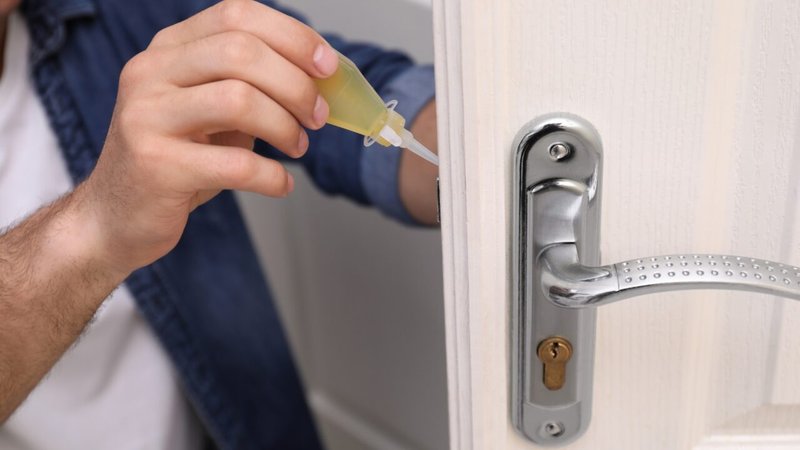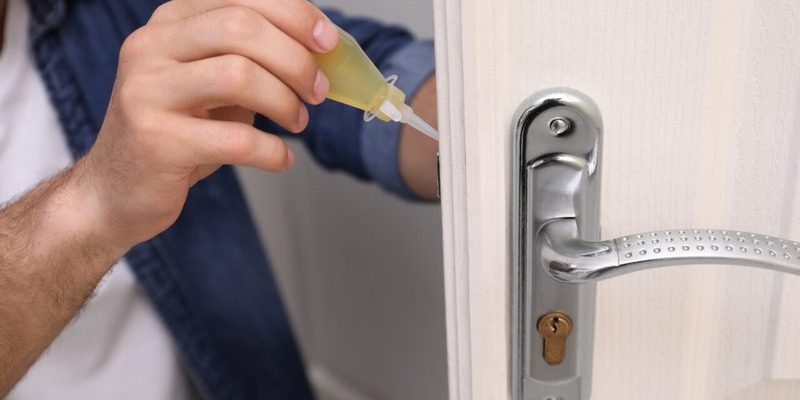
Let’s dive into why it matters to keep your door hardware well-lubricated, especially when you live in a place where humidity is a daily guest. Humidity can cause rust and corrosion, making your hardware less efficient and more prone to damage. By following some best practices and using the right materials, you can ensure your doors stay functional and prolong their lifespan.
Understanding Humidity’s Impact on Door Hardware
Humidity is more than just a weather report—it can be a villain for your door hardware. When the air is saturated with moisture, metal parts can start to rust. Over time, this leads to sticky hinges or misaligned door frames. Imagine trying to open a door that feels like it has a mind of its own; frustrating, right?
Rust and corrosion are the two biggest threats to metal door hardware in humid climates. They can cause your once-smooth door to grind against the frame, making it hard to open or close. Understanding how humidity affects materials is crucial to knowing how often you need to lubricate.
Choosing the Right Lubricant
Not all lubricants are created equal. You might be tempted to grab any old can from the hardware store, but that can lead to more problems than solutions. In humid environments, look for lubricants specifically designed to resist moisture.
Silicone-based lubricants are often recommended because they repel water and don’t wash away easily. They create a slippery layer on metal surfaces, allowing for smooth operation without attracting dirt. Another option is graphite powder, which is excellent for locks and other mechanisms that need a dry lubricant.
Let’s break it down a bit:
- Silicone Spray: Good for hinges and general door movement.
- Graphite Powder: Ideal for locks and mechanisms.
- White Lithium Grease: Great for heavy-duty applications.
Choosing the right lubricant can save you time and effort in the long run.
Preparing Your Door Hardware for Lubrication
Before you start applying lubricant, it’s important to prepare the hardware. Think of it like cleaning your car before a wax; you don’t want dirt getting trapped underneath.
Start by examining your hinges, locks, and other moving parts for any signs of rust or grime. Use a wire brush or a soft cloth to clean off any dirt or debris. If you encounter rust, you can use a rust remover or some fine sandpaper to smooth it out.
After cleaning, make sure to dry the area completely. You want your lubricant to adhere properly, not mix with leftover moisture. This step is often overlooked, but it plays a significant role in effective lubrication.
Applying the Lubricant Correctly
Now comes the fun part—applying the lubricant! This isn’t just spraying and hoping for the best; there’s a technique to it. Start with small amounts, and don’t overdo it. Too much lubricant can attract dust and dirt, which does more harm than good.
For hinges, spray a small amount directly onto the moving parts and work the mechanism back and forth to distribute the lubricant evenly. For locks, you can use a straw attachment if your spray can has one. Just a couple of drops in the keyhole can make a world of difference.
It’s a good idea to wipe away any excess lubricant afterward to prevent it from dripping onto your floor or causing a mess.
Frequency of Lubrication
You might be asking yourself, “How often should I be doing this?” Great question! In humid environments, it’s wise to check your door hardware every few months. After all, the more moisture in the air, the more likely you are to experience rust and corrosion.
If you notice any stiffness or squeaking, don’t wait for the scheduled checks—tend to it right away. Proactive maintenance can save you from bigger problems down the road.
In addition, pay special attention to doors that are frequently used. High-traffic areas often need more attention than those that are seldom opened.
Common Mistakes to Avoid
It’s easy to make mistakes when it comes to door maintenance. Here are a few pitfalls to watch out for:
- Using WD-40: While popular, it’s not the best choice for long-term lubrication. It can wash away quickly in humid conditions.
- Neglecting to Clean: Always clean before lubricating. Otherwise, you’re sealing in dirt and grime.
- Overlubrication: A little goes a long way. Excess lubricant can cause more harm than good.
Avoiding these common mistakes can make your door maintenance easier and more effective.
Taking care of your door hardware in humid environments doesn’t have to be a daunting task. With the right lubricant, a bit of preparation, and consistent upkeep, you can keep your doors functioning smoothly.
Think of it as a small investment in your home’s comfort and functionality. After all, a door that swings freely, without fuss, is like a well-oiled machine. Embrace the routine of checking and lubricating your door hardware, and you’ll enjoy the peace of mind that comes from knowing you’re preventing issues before they start. So grab that lubricant, roll up your sleeves, and give your doors the care they deserve!
